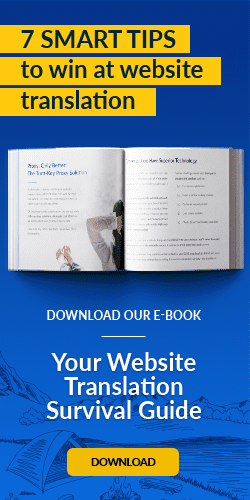In the website translation industry, vendors often use a “price-per-word” pricing model to estimate project costs. Most offer absurdly low project cost estimates.
It’s important to learn the truths about low translation costs—and what they can reveal about a vendor:
- Legacy translation vendors have difficulty identifying critical translatable content on websites, resulting in inaccurate price estimates.
- Low prices can mean vendors are cutting corners, leading to higher hidden costs later.
- Efficiency of parsing algorithms vary—and the most efficient ones save you money.
- There's more to website translation than translation. Many technical and operational workflows are also involved.
Website Translation is Unique
The scope (and eventual cost) of a translation project is usually defined by word count-the total number of words to be translated by the vendor. Determining word count for offline content such as documents is easy. But it's much harder for websites.
Why? Translatable text is often easy to detect on webpages. But translatable digital content lives in many forms and formats, like images, videos, PDFs, on-site applications and more. These elements can be hosted on entirely different servers and databases. Legacy translation vendors with immature or undercooked content-detection technologies will often miss these critical customer-facing components.
Legacy vendors with undercooked technologies often miss translatable content, leading to deceptively low cost estimates.
This means there’s lots of content that is not initially identified for translation. This leads to deceptively low word counts. This, when combined with price-per-word pricing, leads to wildly inaccurate cost estimates.
This missing content is usually discovered as the website is translated, leading to unexpected, skyrocketing translation costs. And in the meantime, your partially-translated website drives customers away.
Low Prices and Cutting Corners
Website translation vendors often compete on price, thanks to low price-per-word pricing. These apparent bargains can woo prospective customers, but hidden costs usually appear later on. (These costs offset the losses the vendors incur with those low price-per-word rates.)
Cheap per-word pricing comes with risks:
- Inflated costs for proofreading and editing, which appear as separate line items
- Paying to translate identical content more than once, or paying anything at all to republish previously-translated content
- Poor translation quality from lack of oversight or use of translation software
- Slow translation turnaround times, which can’t keep up with the pace of your business
In contrast, great vendors provide all-inclusive price-per-word rates, incorporating iterative editorial revisions, QA and publication into their costs. What you see is what you get.
They also use turn-key solutions built specifically for the purpose of eliminating the operational complexity and costs of traditional website translation.
The Total Number of Words Is Irrelevant
Price-per-word works well as a pricing unit for document translation, but for website translation? Not so much.
Great vendors use superior technology that goes beyond detecting all translatable words and instead identifies the proper number of words to translate, which are two separate things.
There’s a big difference between detecting all translatable words and identifying the proper number of words to translate.
Websites contain a high amount of repeated content. This is content that appears on dozens (or hundreds, or even thousands) of times over many pages, such as footers, headers, elements of product descriptions and more. Smart website translation technologies identify these phrases as units called "segments," and automatically populate the translated phrase everywhere it appears on the translated site, at no additional cost. Translate once, pay once, re-use forever. Some translation vendors charge to re-translate or re-populate that content, which drives up costs.
Great website translation vendors also have superior content-parsing technology, which can identify translatable content across many on-site media (and dynamically-loaded offsite content, too).
Almost every website vendor has content-parsing software, but the best use efficient algorithms that smartly reduce the number of words to translate. Look for providers that offer ultra-efficient parsers.
Digital-first agencies further optimise this efficiency with the capability to customise their parsing algorithms. Most providers cannot do this.
You’re Not Just Paying for Translation
The secret of buying website translation: You're not just buying website translation. Unlike a document, your website is a living, breathing, ever-changing thing. These unique characteristics expand the total cost of a project beyond mere price-per-word.
Vendors lean into cheap cost-per-word pricing when they can’t compete with lower costs in other aspects of the project.
The best website translation solutions charge flat-rate subscription fees. This is not a retainer for more translation. This subscription covers the hundreds of technologies, capabilities and tasks required to flawlessly operate your localised site on an on-going basis. They include:
- Technology setup and integration
- Project management
- Managing translation workflows
- Ensuring translation
- Hosting and uptime
- QA
- Daily maintenance and operations
- 24 / 7/ 365 support, and more
You’re paying for the peace of mind of not having to manage these and other complicated, cumbersome tasks.
Great digital-first translation agencies are transparent with their pricing, offer fixed-priced estimates (and stick to them) and have best-in-class capabilities to reduce translation spend. They minimise the burden on IT teams to set up and maintain multilingual websites, too.
Conclusion
As you move forward with your expansion into new online markets, remember that per-word pricing is more nuanced than it appears. Low pricing estimates often come with a high price later. If a vendor offers a price that's too good to be true, it probably is.
Last updated on January 13, 2021
